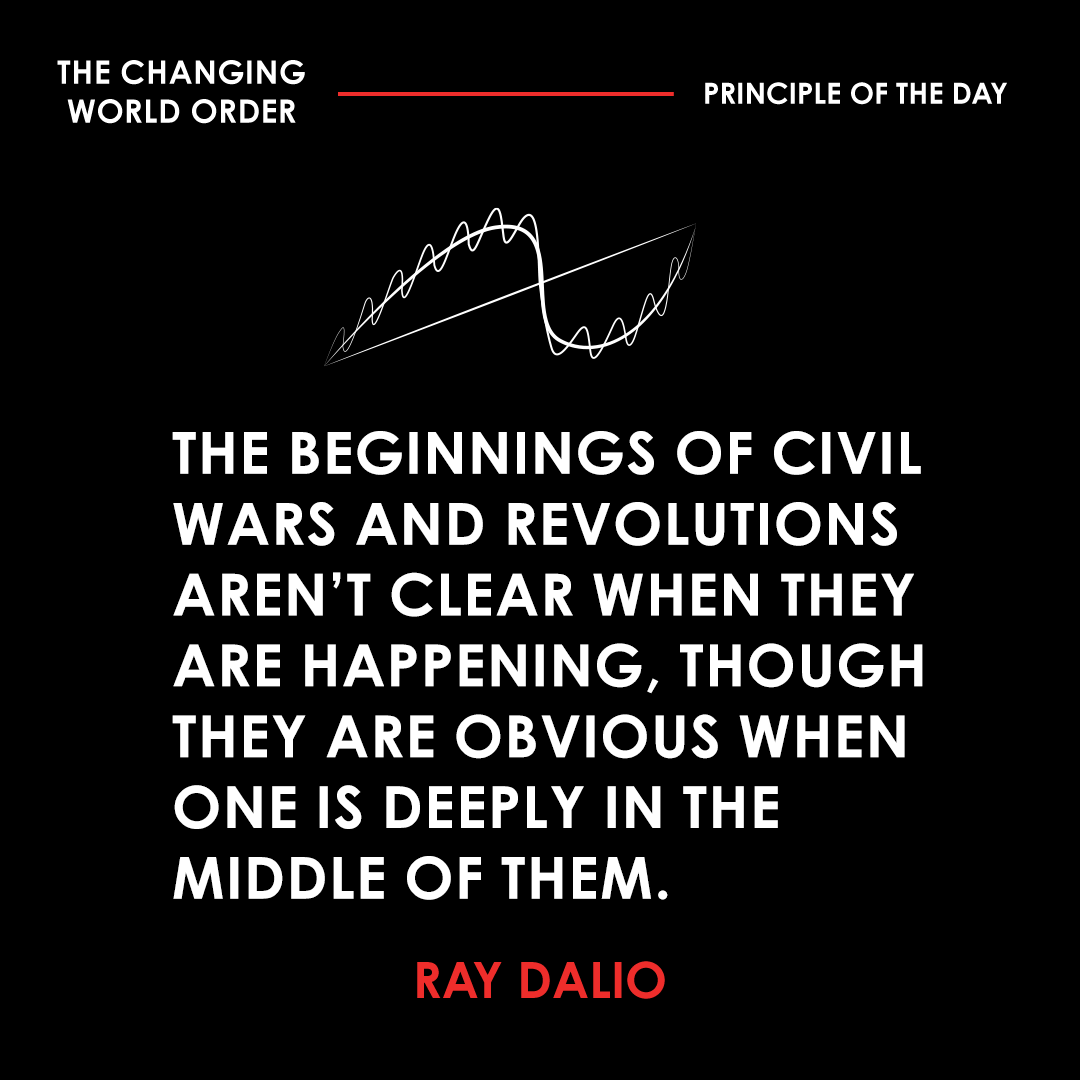
I threw a lot at you in the last post. You might want to watch again slowly so you can see if the sequence makes sense to you. (1/8) 

To summarize, around the upward trend of productivity gains that produce rising wealth and better living standards, there are cycles that produce prosperous periods of building in which the country is fundamentally strong because (2/8)
there are relatively low levels of indebtedness, relatively small wealth, values, and political gaps, people working effectively together to produce prosperity, good education and infrastructure, strong and capable leadership, (3/8)
and a peaceful world order that is guided by one or more dominant world powers. These are the prosperous and enjoyable periods. When they are taken to excess, which they always are, (4/8)
the excesses lead to depressing periods of destruction and restructuring in which the country’s fundamental weaknesses of high levels of indebtedness, large wealth, values, and political gaps, different factions of people unable to work well together, (5/8)
poor education and infrastructure, and the struggle to maintain an overextended empire under the challenge of emerging rivals lead to a painful period of fighting, destruction, (6/8)
and then a restructuring that establishes a new order, setting the stage for a new period of building. (7/8)
If you’re interested in learning more, check out my new book: amazon.com/Changing-World… (8/8)
• • •
Missing some Tweet in this thread? You can try to
force a refresh











